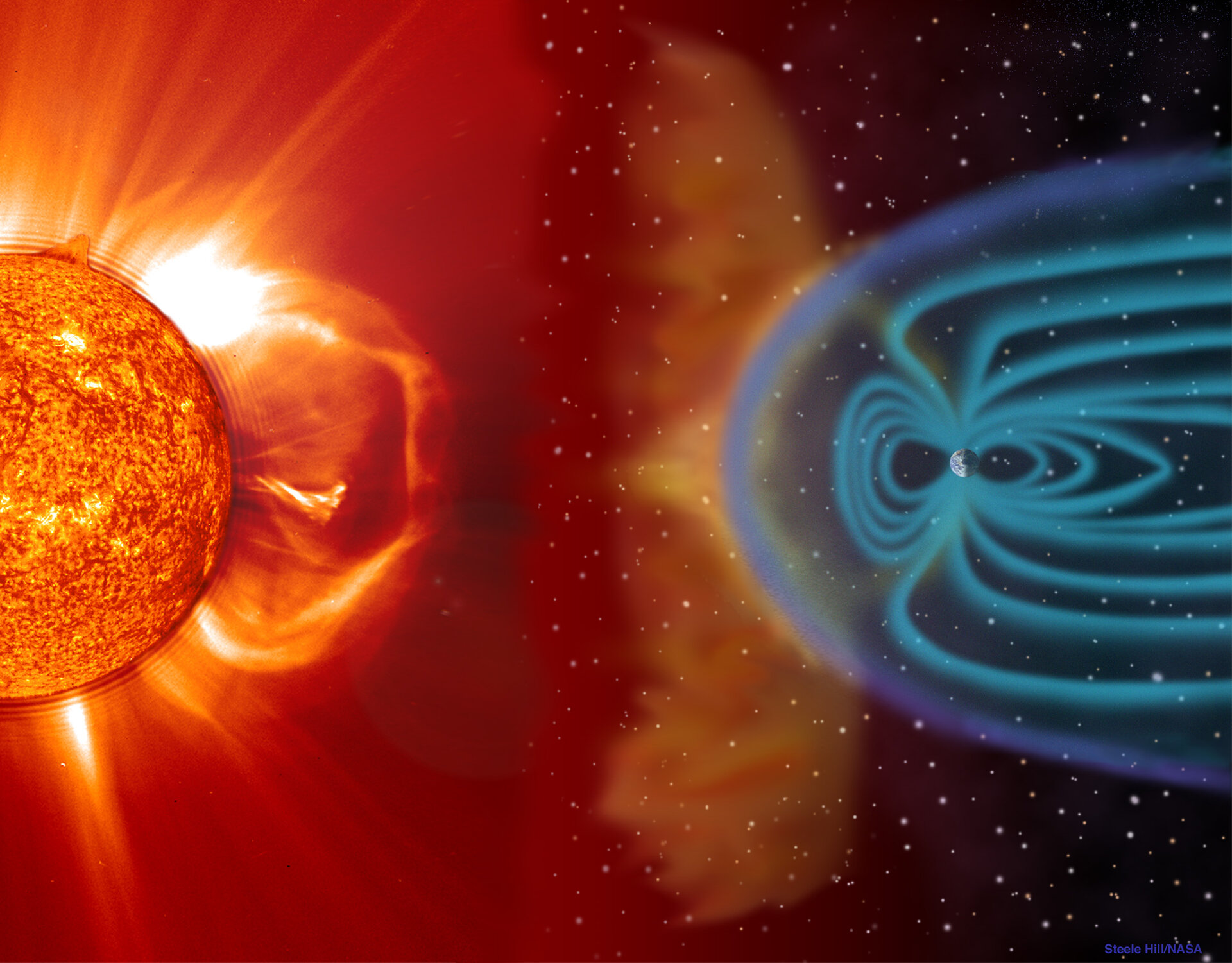ESC Heliospheric Weather
Heliospheric Weather Expert Service Centre (H-ESC)
Mission Statement
{{ esc.esc_mission_statement }}
 Illustration of a coronal mass ejections reaching out in the direction of earth (© ESA/NASA - SOHO/LASCO/EIT)
Illustration of a coronal mass ejections reaching out in the direction of earth (© ESA/NASA - SOHO/LASCO/EIT)Heliospheric Weather encompasses the effects of the solar wind, including the transient structures therein, as they propagate out from the Sun's corona through the heliosphere. This includes heliospheric effects that directly influence the Earth and also other locations within the heliosphere that may be relevant to interplanetary exploration missions.
The fundamental structure of the heliosphere is governed by the Sun's magnetic structure and solar wind outflows. The solar wind can be simplistically described as comprising a radially-expanding, quasi-static background through which propagate immense plasma/magnetic field transients, termed Coronal Mass Ejections (CME) that have been ejected from the Sun. The origin of the background solar wind leads to its delineation into regions of high- and slow-speed solar wind, along the interfaces of which can form extensive swathes of compressed plasma/magnetic field known as Stream Interaction Regions and Co-rotating Interaction Regions (CIR) that endure for multiple solar rotations. Alongside, but associated with, these bulk plasma phenomena are high-energy particle populations known as Solar Energetic Particle (SEP) events that originate either through energisation processes occurring at the site of solar flares or at interplanetary shocks.
Example of CME propagation modelling within the heliospheric domain using the 3D MHD WSA/Enlil models.
While CMEs are considered to be the quintessential driver of space weather effects being associated, for example, with the vast majority of intense magnetic storms, the potentially deleterious effects of CIRs and SEPs are also well known. The ability to characterise, monitor and forecast all of these features is of critical importance in understanding, mitigating and responding to the impacts of space weather events.
For heliospheric weather the conditions of the ambient solar wind, and solar wind transients, which are of particular relevance are:
- Plasma density of CMEs and the background solar wind;
- Velocity of CMEs and the background solar wind;
- IMF (of CMEs and the background solar wind), particularly in terms of north-south polarity;
- The flux, spectrum and composition of solar energetic particles (SEPs);
The micro-particle distributions are also relevant to this domain, particularly at certain heliospheric locations, however this has not been the main focus of the current development activities.
Direct and timely in-situ solar wind monitoring within the heliosphere is currently only available from a small number of locations (near-Earth and STEREO-A, both at ~1AU from the Sun). The H-ESC therefore makes use of a variety of models to help assess and forecast the anticipated conditions at locations throughout the heliosphere. The key inputs for these models come from the Solar Weather Domain (see S-ESC) and include:
- Magnetograms for characterising the background solar wind emission from the Sun;
- EUV imagery of coronal holes, again to assess background solar wind and temporal changes;
- Coronagraph imagery for analysis of initial, near-Sun, CME characteristics;
- Active region and other solar surface feature identification and assessment to aid probabilistic assessment of changes in heliospheric weather conditions;
- X-ray flare warnings, alerts and observations as indicators of transient solar surface events and potential locations of Solar Energetic Particle (SEPs);
The outputs from the H-ESC serve both the direct end-users involved in solar system missions design, planning and operation, as well as critical inputs to downstream processing of the radiation, geomagnetic and ionospheric ESCs and external product providers. These H-ESC outputs include:
- Forecasts of background solar wind characteristics at Earth and other heliospheric locations;
- Alerts relating to large scale heliospheric features in the background solar wind such as High Speed Streams (HSSs) and Co-rotating Interaction Regions (CIRs);
- Characterisation and propagation of transient solar wind features, most notably CMEs;
- Warnings and alerts relating to the transient features such as the anticipated arrival time of a CME;
- Near real time in-situ measurements of the solar wind plasma characteristics. These provide a ground-truth against which to assess the model predictions and also as drivers of downstream models;
- Near real time in-situ measurements of the energetic particle environment which may be a danger to astronauts or temporarily or permanently damage space-based electronic systems;
The H-ESC also provides a variety of user driven models and access to historical heliospheric mission data in support of post-event analysis and development of spacecraft engineering design limits.
Examples of some current H-ESC forecast, near real time and post event analysis products.